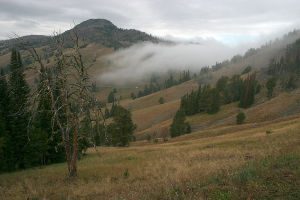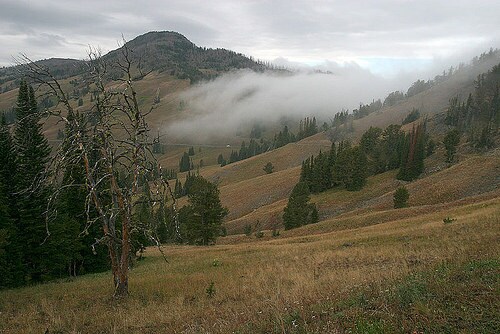
Something else other than the rise of agriculture spurred the accelerated growth in human population sizes that in turn gave rise to urbanized civilization. At least, so suggests a recent study* conducted by H. Jabran Zahid of the Smithsonian Astrophysical Observatory, and his colleagues from the University of Wyoming, the results of which are published in the Proceedings of the National Academy of Sciences.
Using a statistical analysis of radiocarbon dates, the researchers estimated the long-term population growth rate for foraging societies in Wyoming and Colorado during the period 6,000-13,000 years ago, and found that the growth rate is comparable to growth rates previously determined for contemporaneous farming societies in Europe. It is a growth rate that supports the suggestion that the introduction of agriculture was not directly related to the long-term annual rate of population growth that so many scholars have traditionally theorized. The results are also consistent with recent genetic studies that have shown that worldwide human population expansion actually occurred before the advent of agriculture, during prehistoric times. The sudy authors report that the same rate of growth occurred across differentiating environments, suggesting that human populations successfully adapted to their environments and that population expansion may have occurred based on other factors, such as global climate change or endogenous biological factors.
_____________________________________________
A scene in Wyoming. Greg Willis, Wikimedia Commons
____________________________________________________________
Source: Some of this article was adapted and edited from a PNAS press release.
* “Agriculture, population growth, and statistical analysis of the radiocarbon record,” by H. Jabran Zahid, Erick Robinson, and Robert L. Kelly.
____________________________________________________________
In addition, the latest Popular Archaeology ebook is now available.
______________________________________________
Travel and learn with Far Horizons.
____________________________________________
This richly illustrated issue includes the following stories: Two remarkable discoveries that are shedding light on human beginnings in Africa; a traveling exhibit and an archaeological site that show how knowledge is more valuable than gold; a Spanish cave and a unique burial that are offering a tantalizing glimpse on the lives of Ice Age hunter-gatherers in Europe; the stunning visual reconstruction of an ancient Roman town; enlightening new finds at a remarkably well-preserved site of ancient Hellenistic-Roman culture overlooking the Sea of Galilee; rare finds that are shedding light on occult practices among ancient Greeks in Sicily; and an overview of the overwhelmingly rich archaeological heritage of Britain. Find it on Amazon.com.







